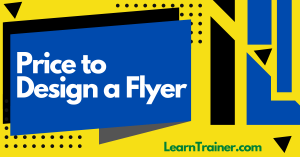Alternative Art Styles
Are you willing to step outside the limitations of traditional art, and discover new horizons? If so, get ready for an exciting journey into new art styles that challenge the norms of art and redefine the concept of creativity.
From abstract expressionism to surrealism, the unconventional techniques are a refreshing change from conventional methods. It doesn’t matter if it’s using unusual material or exploring new media, artists across the globe are breaking boundaries in ways that have never been before. Take a seat and get excited for an exciting trip as we dive into the world of fascinating alternative style of art that can allow your imagination to soar above the limits of what you can imagine.
What Is Alternative Style of Art?
The term “alternative art” refers to non-traditional, unconventional ways of art and expression which break from traditional practices and norms. They are typically characterized by the unusual subjects they cover and techniques that are experimental or distinctive views of the world. Contrary to traditional forms of art which attempt to accurately depict the world of physical reality, alternative artistic styles are characterized by individualism as well as creativity and freedom of expression.
An illustration of an alternative art style is surrealism that was developed in the beginning of the 20th century, as a reaction to rational thinking. Surrealists were attempting to penetrate the subconscious mind and access the world of dreaming. In blending the real with the fantasy and combining elements from different genres with unexpected results, surrealists produced bizarre and frequently shocking images that challenged traditional notions.
A different art form is street art, which is also called street art or graffiti. Originating from the rebellious anti-contemporary movements of the late 1960s, street artists utilized the public space, such as the walls of buildings and other structures as canvas to express themselves.
Street art is a vast variety of techniques for art ranging from the use of stencils and paste-ups, to spray-paint murals. The majority of them address politics or social concerns and aims to draw attention within public areas, rather than galleries or galleries.
The alternative art forms give artists a chance to challenge the boundaries of mainstream aesthetics. They provide new views of the world while encouraging creativity and experimentation in the process of creating. It’s whether it’s through the exploring of dreams or images, and street art’s subversive interaction with urban settings The unconventional style of street art challenges the way we view reality.
Discovering the World of Unusual Style of Art
In the world of art, there is undiscovered art forms and alternative styles of art which challenge the conventional ideas of what creativity is. The less well-known styles diverge from conventional techniques and instead embrace individuality and ingenuity.
One example of this that is popular Graffiti Art, which originated in urban environments in a way of protest against the norms of society. Graffiti artists employ vivid colors, striking lines and powerful images to turn dull walls into stunning canvasses that draw focus.
In a deeper and deeper, more mysterious realm that is the fascinating realm of Surrealism. The surrealist style of art attempts to tap into the unconscious mind through the dreamlike images and bizarre juxtapositions.
Surrealist artists such as Salvador Dali and Rene Magritte were adamant about absurdity when they created melting clocks, or people sporting bowler hats that floated on the air. Through their distinctive perspective of the world, they were able to challenge our assumptions by bringing viewers into their enthralling alternate realms.
Exploring these different aesthetics offers the chance to defy convention and discover new avenues of imagination. When we venture out of the norm We discover fresh viewpoints that challenge boundaries and question the notion of what art could be. Why not try the unusual? We should take this fascinating journey across the frontiers that are unexplored by alternate art styles. It could ignite a spark inside us to produce truly unique things for our own.
Digital Art:
Digital art has transformed the realm of expression through art through pushing the boundaries of alternative artistic styles. Even though traditional art forms hold their appeal however, artists are currently discovering new areas of creative expression through the use of technology and innovative. From glitch art to pixel artwork, the digital platform provide many possibilities that artists can explore and test the boundaries of established practices.
A different style that’s gaining momentum is the art of algorithmic design, in which artists employ algorithms and computer programs to create stunning artwork. Combining coding with creative thinking allows for unlimited variations as well as precise control of shapes and patterns, colors, and even the textures. The combination of the two drives creativity in the world of digital art since artists can create complex compositions that grow as time passes or include real-time stream of data.
In addition augmented real-time (AR) has broadened the boundaries of digital art, blending the virtual and real world. Artists can now use AR to display their artworks on the environment with smart phones or special AR gadgets. In manipulating space, and removing themselves from traditional canvas, these works immerse the viewer into an immersive experience that blurs the distinction between reality and imagination.
Pop Art:
Pop Art, one of the most radical art forms in the 20th century began as a protest against traditional artistic styles. Through its vibrant colors, the use of common objects and famous images of popular media, Pop Art celebrated the mundane in unique ways. Artistic figures such as Andy Warhol and Roy Lichtenstein set the stage for the movement of alternative art which tried to challenge conventional ideas of what was called art.
With their vibrant work, Pop artists brought popular art into fine art. In appropriating advertisements as well as comics and consumer goods, they challenged our obsession with pop consumption and culture. They found inspiration in the everyday and turned mundane items into artful expression. It was the result of the explosion of colors and enthusiasm that resonated with viewers across the globe.
Pop Art challenged the elitist quality of fine art, opening it up to more people. It accepted commercialization and mass media as integral elements of our society instead of considering them to be low-brow influences. Through the incorporation of images that were familiar to everybody, Pop Art allowed viewers to relate to artworks at a deeper level. Pop Art blurred the lines between the two cultures and democratized art in a manner that was never previously done.
Surrealism Unleashing the Power of the Mind that is Unconscious
Surrealism as among the more intriguing artistic styles that delve deeply into the depths of the subconscious mind. It was created through Andre Breton in the early 20th century, this style was a quest to discover the creative potential that lies within our dreams and desires. The Surrealists sought to disengage from traditional ideas and to enter the world of reality combined with fantasies. With their art they urged viewers to connect with their unconscious worlds.
One of the most important characteristics of surrealism is the ability it has to test our notion of reality. Through the blending of seemingly incompatible elements together, they force us to rethink our perception of the possibilities.
Salvador Dali’s famous melting clocks from The Persistence of Memory or Rene Magritte’s floating clouds paired with bowler hats floating in The Son of Man are the best examples of how artists used images to stir up profound emotions and provoke a variety of ideas.
Although the world of surrealism isn’t always easy sometimes, it provides an escape from the ordinary and mundane. Instead of merely presenting the same scenes or themes in different mediums, they create disjointed versions that call viewers to face their deepest concerns and fears head-on.
The works of surrealists trigger powerful emotional responses due to tapping into the part of us that can be a bit hidden the subconscious mind. Surrealism provides power and clarity to the hidden spaces where alternate realities are present, taking our consciousness beyond the boundaries of conventional thinking and offering glimpses of amazing landscapes created solely by the imagination.
Street Art:
It is hard to deny the importance and appeal in street art, an art form that has gone beyond its humble origins. Many times, it began as rebellious actions of graffiti and street art, it has evolved into urban art that graces bridges, buildings and other public spaces across the globe. The graffiti that was initially thought of as vandalism has nowadays admired for its originality and daring expression.
Street art provides an alternative to conventional art by letting go from the limits of museums and galleries. It brings life and vibrancy to the otherwise dull cityscape making it an exciting visual experience for the artist and the viewer. Because of its accessibility street art can be a catalyst for conversation and interaction with people that might not normally would have an interest or access to art of the present.
Additionally, street art typically addresses sensitive social issues in a direct and honest manner and provides a much-needed perspective about issues like the issue of gentrification, inequality, or the destruction of our environment. This is a great way for artists to express their thoughts directly with the communities in which silence or neglect remains. This is how street artists can become more than artists but also active activists who push limits through their work.
While we watch the growth of this new art scene it is clear that street art has taken an identity of its own, far beyond the mere graffiti marks that are scribbled on walls. The art of street art request us with its dazzling creativity and encourages discussion about pertinent questions that are relevant to our current society. From stencils and spray cans and abandoned structures to commission murals. These urban artifacts tell stories that go beyond walls.


